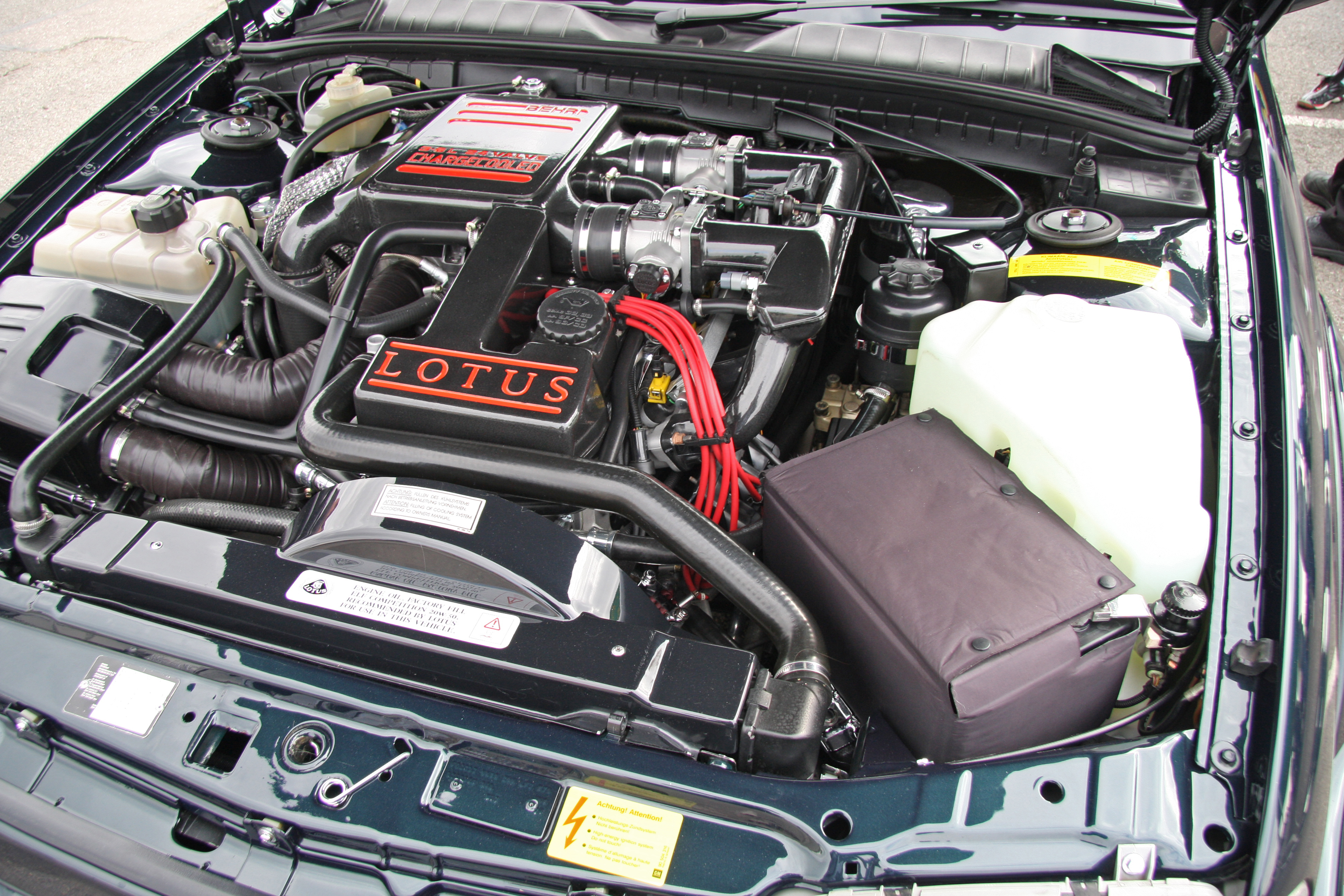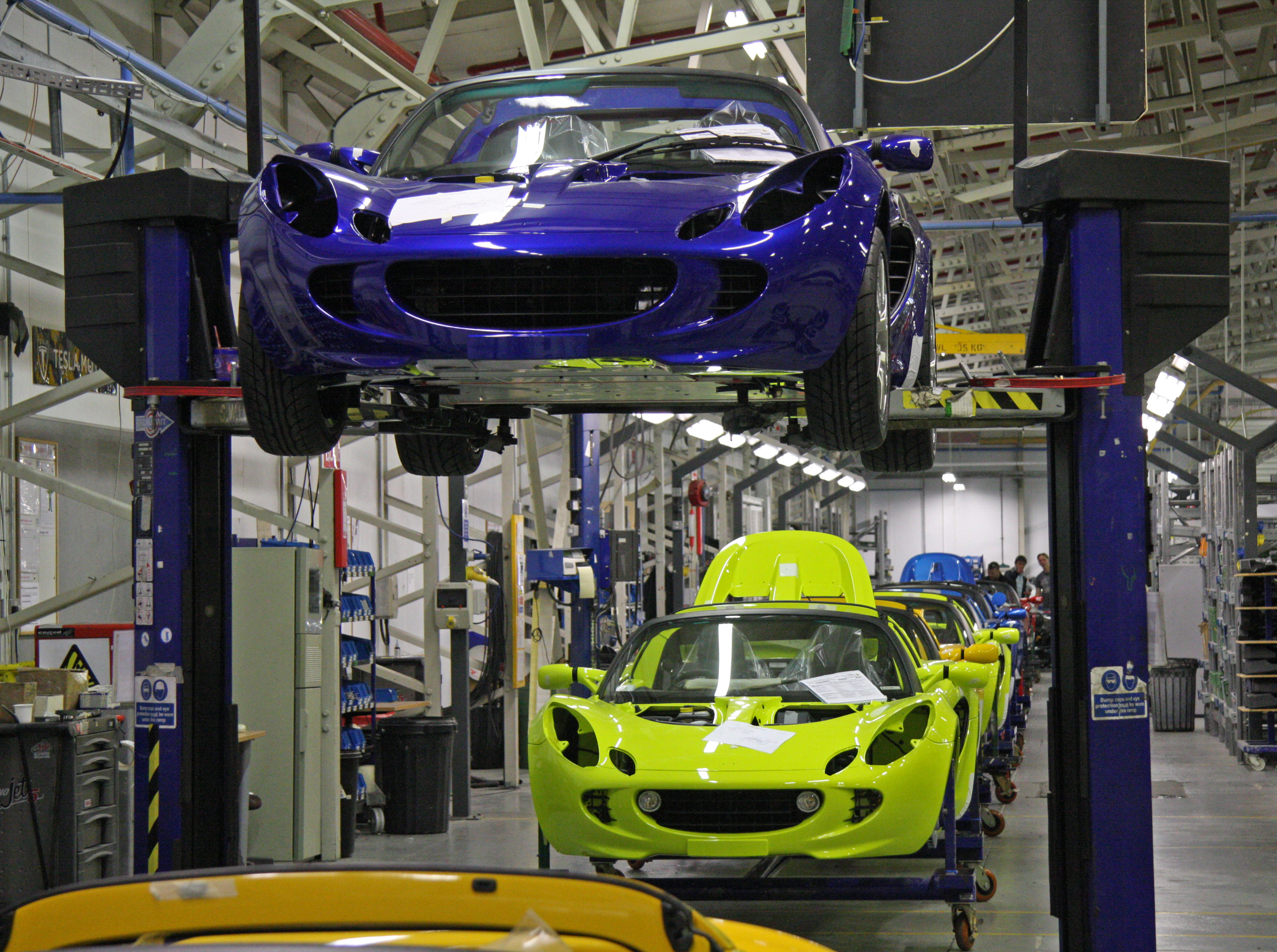|
Lotus Omega
The Lotus Carlton (also called Vauxhall Lotus Carlton, Lotus Omega and Opel Lotus Omega) is a Vauxhall Carlton/Opel Omega A saloon upgraded by Lotus in order to be able to reach speeds up to 285 km/h (177 mph) with acceleration to equal contemporary sports cars. Like all Lotus vehicles, it was given a type designation—Type 104 in this case. The exterior changes were minimal with the addition of a rear spoiler, cooling vents on the bonnet, Lotus badges on the front wings and bootlid, a bodykit and considerably wider wheel arches distinguishing it from a standard Carlton/Omega. The car was only sold in one colour, a shade of green called ''Imperial Green'' (similar to British Racing Green). Engine and drivetrain Performance modifications started with an upgraded engine, which was enhanced by Lotus from the standard Opel 24v straight six unit (used in the GSi). The engine was enlarged to a capacity of . Lotus then added two Garrett T25 turbochargers, which provid ... [...More Info...] [...Related Items...] OR: [Wikipedia] [Google] [Baidu] |
Opel Omega
The Opel Omega is an executive car engineered and manufactured by German automaker Opel between 1986 and 2004. The first generation, the Omega A (1986–1993), superseded the Opel Rekord. It was voted European Car of the Year for 1987, and was available as a saloon or estate. The second generation, the Omega B, was manufactured from 1993 to 2004. Rebadged variants of the Omega were marketed worldwide, including in North America as the Cadillac Catera, in Great Britain as the Vauxhall Omega, and South America as the Chevrolet Omega. Re-engineered versions were manufactured in Australia since 1988 as the Holden Commodore (and its derivatives) since 1999, which were in turn exported to South America as the Chevrolet Omega and the Middle East as the Chevrolet Lumina. Production of the Omega was discontinued in 2004, apart from the Australian re-engineered versions that carried on until 2006 as a sedan and 2007 in other guises. It was succeeded by the Opel Signum. __TOC__ Omega ... [...More Info...] [...Related Items...] OR: [Wikipedia] [Google] [Baidu] |
Lotus Cars
Lotus Cars Limited is a British automotive company headquartered in Norfolk, England which manufactures sports cars and racing cars noted for their light weight and fine handling characteristics. Lotus was previously involved in Formula One racing, via Team Lotus, winning the Formula One World Championship seven times. Lotus Cars was founded and owned for many years by Colin Chapman. After his death and a period of financial instability, it was bought by General Motors, then Romano Artioli and DRB-HICOM through its subsidiary Proton. It is currently majority owned by Chinese multinational Geely, with Etika Automotive as a minority shareholder. The engineering consultancy firm Lotus Engineering, an offshoot of Lotus Cars, has facilities in the United Kingdom, United States, China, and Malaysia. Notable Lotus cars include the Lotus Seven, the Lotus Esprit and the Lotus Elan. History Early years The company was formed in 1952 as Lotus Engineering Ltd. by engineers Colin Ch ... [...More Info...] [...Related Items...] OR: [Wikipedia] [Google] [Baidu] |
Sports Saloon
A sports sedan (also known as sports saloon in British English) is a subjective term for a sedan car that is designed to have sporting performance or handling characteristics. History The term was originally introduced in the 1930s and early examples include the Sports Saloon versions of the Rover 14 and Rover 16. From the 1960s, the term ''sports sedan'' was increasingly applied by manufacturers to special versions of their vehicles that allowed them to enter production cars in motor races. These cars contained modifications not normally permitted by the regulations which therefore required cars to be homologated typically by selling them in minimum numbers to the public. Some of the earlier examples were the Alfa Romeo 1900, Renault R8 Gordini, Triumph Dolomite, and Lotus Cortina. In the twentieth century, sports sedans used a manual transmission and rear-wheel drive. However as other transmission types and drivetrain layouts have become more widespread for sed ... [...More Info...] [...Related Items...] OR: [Wikipedia] [Google] [Baidu] |
Mahle GmbH
MAHLE GmbH is a German automotive parts manufacturer based in Stuttgart, Germany. It is one of the largest automotive suppliers worldwide. As a manufacturer of components and systems for the combustion engine and its periphery, the company is one of the three largest systems suppliers worldwide for engine systems, filtration, electrics, mechatronics, and thermal management. In 2018, Mahle GmbH sales amounted to over €12.5 billion. , its 71,000 employees work in 160+ production plants and 12 major research and development centers in Germany, Great Britain, United States, Brazil, Japan, China, India, Poland, Spain, Slovenia. Worldwide, over 6000 development engineers and technicians work as partners for MAHLE's customers on new products and systems. History Formation In 1920 the engineer and pilot Hellmuth Hirth established together with others a small workshop in Cannstatt, where he developed and constructed a two-stroke engine. 26-year-old Hermann Mahle started working for ... [...More Info...] [...Related Items...] OR: [Wikipedia] [Google] [Baidu] |
Multi-valve
In automotive engineering a multi-valve or multivalve engine is one where each cylinder has more than two valves. A multi-valve engine has better breathing and may be able to operate at higher revolutions per minute (RPM) than a two-valve engine, delivering more power. Multi-valve rationale Multi-valve engine design A multi-valve engine design has three, four, or five valves per cylinder to achieve improved performance. Any four-stroke internal combustion engine needs at least two valves per cylinder: one for ''intake'' of air (and often fuel), and another for ''exhaust'' of combustion gases. Adding more valves increases valve area and improves the flow of intake and exhaust gases, thereby enhancing combustion, volumetric efficiency, and power output. Multi-valve geometry allows the spark plug to be ideally located within the combustion chamber for optimal flame propagation. Multi-valve engines tend to have smaller valves that have lower reciprocating mass, which can red ... [...More Info...] [...Related Items...] OR: [Wikipedia] [Google] [Baidu] |
Water Pump
A pump is a device that moves fluids (liquids or gases), or sometimes slurries, by mechanical action, typically converted from electrical energy into hydraulic energy. Pumps can be classified into three major groups according to the method they use to move the fluid: ''direct lift'', ''displacement'', and ''gravity'' pumps. Mechanical pumps serve in a wide range of applications such as pumping water from wells, aquarium filtering, pond filtering and aeration, in the car industry for water-cooling and fuel injection, in the energy industry for pumping oil and natural gas or for operating cooling towers and other components of heating, ventilation and air conditioning systems. In the medical industry, pumps are used for biochemical processes in developing and manufacturing medicine, and as artificial replacements for body parts, in particular the artificial heart and penile prosthesis. When a casing contains only one revolving impeller, it is called a single-stage pump. Whe ... [...More Info...] [...Related Items...] OR: [Wikipedia] [Google] [Baidu] |
Turbochargers
In an internal combustion engine, a turbocharger (often called a turbo) is a forced induction device that is powered by the flow of exhaust gases. It uses this energy to compress the intake gas, forcing more air into the engine in order to produce more power for a given displacement. The current categorisation is that a turbocharger is powered by the kinetic energy of the exhaust gasses, whereas a is mechanically powered (usually by a belt from the engine's crankshaft). However, up until the mid-20th century, a turbocharger was called a "turbosupercharger" and was considered a type of supercharger. History Prior to the invention of the turbocharger, |
Garrett AiResearch
Garrett AiResearch was a manufacturer of turboprop engines and turbochargers, and a pioneer in numerous aerospace technologies. It was previously known as Aircraft Tool and Supply Company, Garrett Supply Company, AiResearch Manufacturing Company, or simply AiResearch. In 1964, Garrett AiResearch merged with Signal Oil & Gas to form a company renamed in 1968 to Signal Companies, which in 1985 merged with Allied Corp. into AlliedSignal. In 1999 AlliedSignal acquired Honeywell and adopted the Honeywell name. Founding years John Clifford "Cliff" Garrett founded a company in Los Angeles in 1936 which came to be known as Garrett AiResearch or simply AiResearch. The company was first named Aircraft Tool and Supply Company, then by early 1937 was renamed as Garrett Supply Company, and by 1939, AiResearch and shortly thereafter AiResearch Manufacturing Company, which then became a division within the Garrett Corporation. Already operating his Garrett Supply and Airsupply businesses, i ... [...More Info...] [...Related Items...] OR: [Wikipedia] [Google] [Baidu] |
Opel Lotus Omega Rear DSC00825
Opel Automobile GmbH (), usually shortened to Opel, is a German automobile manufacturer which has been a subsidiary of Stellantis since 16 January 2021. It was owned by the American automaker General Motors from 1929 until 2017 and the PSA Group, a predecessor of Stellantis, from 2017 until 2021. Opel vehicles are sold in the United Kingdom as Vauxhall. Some Opel vehicles were badge-engineered in Australia under the Holden brand until 2020 and in North America and China under the Buick, Saturn, and Cadillac brands. Opel traces its roots to a sewing machine manufacturer founded by Adam Opel in 1862 in Rüsselsheim am Main. The company began manufacturing bicycles in 1886 and produced its first automobile in 1899. With the Opel RAK program, the world's first rocket program, under the leadership of Fritz von Opel, the company played an important role in the history of aviation and spaceflight: Various land speed records were achieved, and the world's first rocket-powered flights we ... [...More Info...] [...Related Items...] OR: [Wikipedia] [Google] [Baidu] |
Lotus Carlton Engine - Flickr - Exfordy
Lotus may refer to: Plants *Lotus (plant), various botanical taxa commonly known as lotus, particularly: ** ''Lotus'' (genus), a genus of terrestrial plants in the family Fabaceae **Lotus flower, a symbolically important aquatic Asian plant also known as Indian or sacred lotus * Lotus tree, a plant in Greek and Roman mythology Places *Lotus, California, an unincorporated community in El Dorado County, California, United States *Lotus, Indiana, an unincorporated community in Union County, Indiana, United States *Lotus, Florida, a former village in Brevard County, Florida, United States *Lotus, Kentucky, an unincorporated community in Bullitt County, Kentucky, United States Brands *Lotus Cars, a British motor vehicle manufacturer **Lotus F1 Team, a British Formula One team that started competing in the 2012 season **Team Lotus, a British Formula One racing team that competed between 1954 and 1994 **Pacific Team Lotus, the successor team that resulted from a merger with Pacific a ... [...More Info...] [...Related Items...] OR: [Wikipedia] [Google] [Baidu] |
British Racing Green
British racing green, or BRG, is a colour similar to ''Brunswick green'', ''hunter green'', ''forest green'' or '' moss green'' ( RAL 6005). It takes its name from the green international motor racing colour of the United Kingdom. This originated with the 1903 Gordon Bennett Cup, held in Ireland (then still part of the UK), as motor-racing on public roads was illegal in Great Britain. As a mark of respect, the British cars were painted shamrock green. There is no exact hue for BRG – currently the term is used to denote a spectrum of deep, rich greens. "British racing green" in motorsport terms meant only the colour green in general – its application to a specific shade has developed outside the sport. Origins of the association In the days of the Gordon Bennett Cup, Count Eliot Zborowski, father of inter-war racing legend Louis Zborowski, suggested that each national entrant be allotted a different colour. Every component of a car had to be produced in the compe ... [...More Info...] [...Related Items...] OR: [Wikipedia] [Google] [Baidu] |
Sports Car
A sports car is a car designed with an emphasis on dynamic performance, such as handling, acceleration, top speed, the thrill of driving and racing capability. Sports cars originated in Europe in the early 1900s and are currently produced by many manufacturers around the world. Definition Definitions of sports cars often relate to how the car design is optimised for dynamic performance, without any specific minimum requirements; both a Triumph Spitfire and Ferrari 488 Pista can be considered sports cars, despite vastly different levels of performance. Broader definitions of sports cars include cars "in which performance takes precedence over carrying capacity", or that emphasise the "thrill of driving" or are marketed "using the excitement of speed and the glamour of the (race)track" However, other people have more specific definitions, such as "must be a two-seater or a 2+2 seater" or a car with two seats only. In the United Kingdom, early recorded usage of the "sports car" ... [...More Info...] [...Related Items...] OR: [Wikipedia] [Google] [Baidu] |



.jpg)





